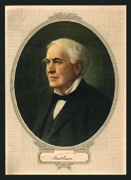 Frequently, concerns about copyright compliance come up, particularly as it relates to sharing electronic “copies” of readings and videos in online course. The purpose of copyright law is to give protection, for a limited time, to authors of original works. But while copyright notices and FBI warnings focus on restrictions, copyright law is also designed to promote science and the arts by facilitating the dissemination of knowledge. It is a complex area and defies easy explanation.
Frequently, concerns about copyright compliance come up, particularly as it relates to sharing electronic “copies” of readings and videos in online course. The purpose of copyright law is to give protection, for a limited time, to authors of original works. But while copyright notices and FBI warnings focus on restrictions, copyright law is also designed to promote science and the arts by facilitating the dissemination of knowledge. It is a complex area and defies easy explanation.This is why “the copyright law contains a list of the various purposes for which the reproduction of a particular work may be considered fair, such as criticism, comment, news reporting, teaching, scholarship, and research.” (U.S. Copyright Office) “Fair Use” is one means by which copyrighted works can be used under certain circumstances without first obtaining permission of the copyright holder. It is limited, but flexible, and is commonly used in educational settings like ours.
 After all, if no one was allowed to use Thomas Edison’s ideas, how many technological advances would still be far in the future? If William Shakespeare’s works could not be quoted without his permission, where would literature and film be today? How many experiments would never have been tried and discoveries unmade? How many creative ideas never sparked and genius minds left unchallenged? This kind of limitation is not in keeping with the American way.
After all, if no one was allowed to use Thomas Edison’s ideas, how many technological advances would still be far in the future? If William Shakespeare’s works could not be quoted without his permission, where would literature and film be today? How many experiments would never have been tried and discoveries unmade? How many creative ideas never sparked and genius minds left unchallenged? This kind of limitation is not in keeping with the American way. Making a Fair Use determination is not a simple "yea or nay" decision. “There is no specific number of words, lines, or notes that may safely be taken without permission. Acknowledging the source of the copyrighted material does not substitute for obtaining permission.” (U.S. Copyright Office)
Conducting a Fair Use analysis requires weighing four factors for each individual use. Sometimes the use is clear-cut. Other times it's a judgment call, and two people analyzing the same situation can come up with different outcomes. Such is the nature of Fair Use. The four factors are:
- The purpose and character of the use (commercial or nonprofit educational)
- The nature of the copyrighted work
- The amount and substantiality of the portion used in relation to the work as a whole
- The effect of the use upon the potential market for, or value of, the work
Like the U.S. Constitution, copyright laws are sufficiently vague so as to not require rewriting with every new invention, but provide sufficient guidelines for reasonable action. Accordingly, Hope has developed a policy which “respects the rights of copyright owners and seeks to comply fully with U.S. Copyright Law… This policy points to practical advice and procedures on copyright related matters.” (HIU Darling Library. Copyright Guide.)
While FBI warnings are scary, copyrights and what constitutes “fair use” is a gray area. We can sleep at night because our policy and standard operating procedures show a good faith effort to do our best to follow the laws. If we err, we shouldn’t be too far off track that we can’t correct our mistake and get back to having a clear conscience.
Check out our Copyright Guide if you have questions about copyright laws, fair use, the TEACH Act, the DCMA (Digital Millenium Copyright Act), getting permission to use copyrighted works, and best practices for multimedia and online educational use of copyrighted materials.
Sources:
Hope International University Darling Library. Copyright Guide. http://libguides.hiu.edu/copyright
U.S. Copyright Office. Copyright. Fair Use. http://www.copyright.gov/fls/fl102.html
No comments:
Post a Comment